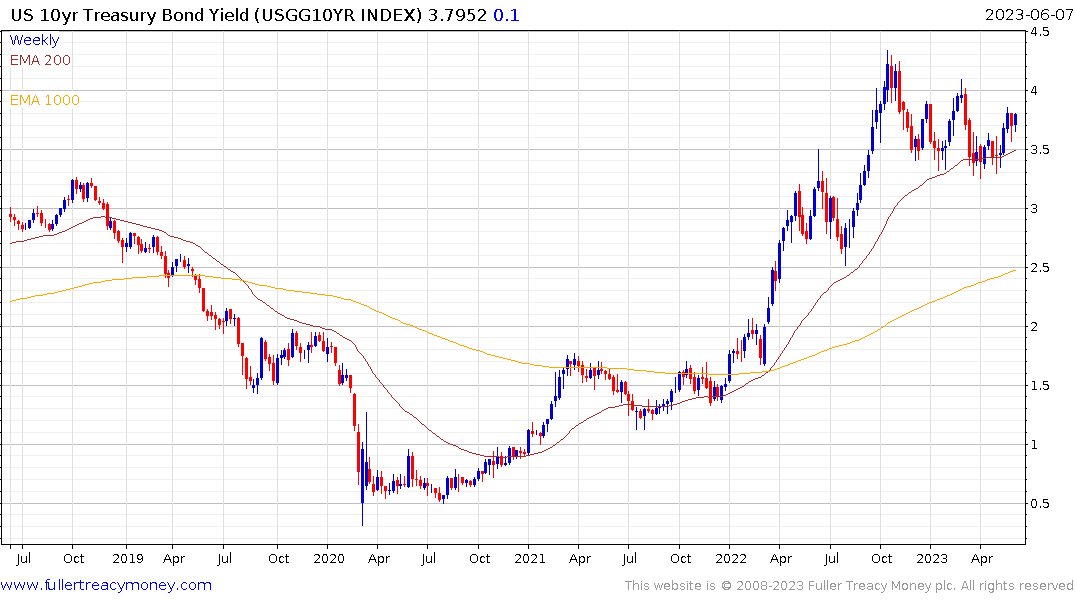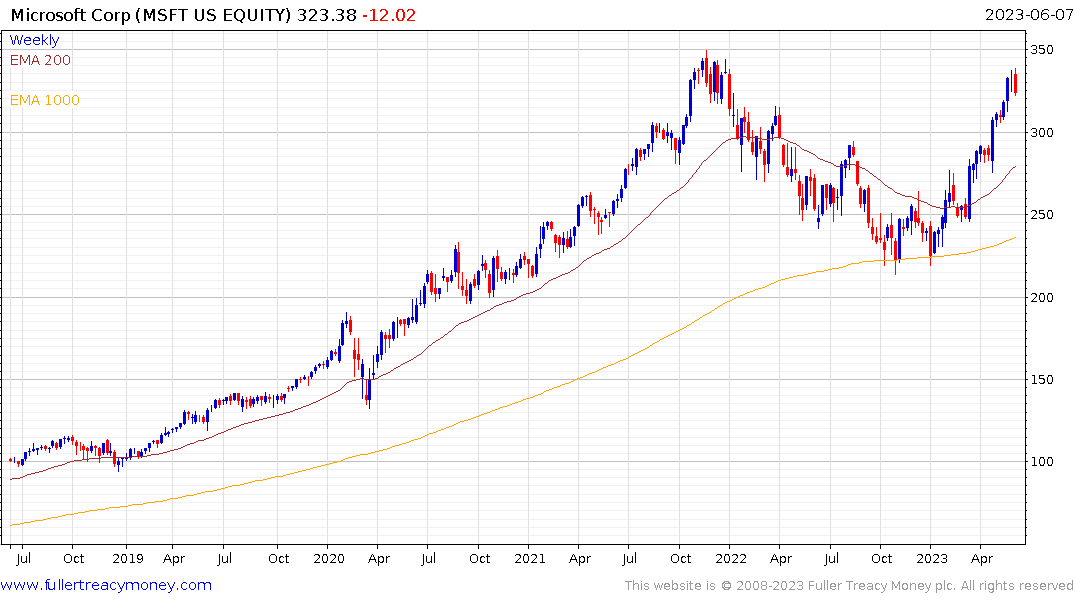Traders Are Leaning Toward Fed Hike by July as Bond Yields Climb
This article from Bloomberg may be of interest to subscribers. Here is a section:
The Treasury market briefly restored the full pricing of Federal Reserve tightening by July, which would be the last interest-rate hike in 2023.
The latest shift in expectations for Fed policy was accompanied by a slide bonds, with the yields on five-year Treasuries up at least 11 basis points. Selling picked up after the Bank of Canada cited stubborn inflation pressures for delivering a quarter-point hike Wednesday.
The rate on swap contracts linked to the July gathering climbed to a peak of 5.33% on Wednesday, or 25 basis points above the current effective fed funds rate of 5.08%, before easing back late in New York. The June swap showed eight basis points of tightening ahead of next week’s Fed meeting, suggesting that traders are leaning in favor of a tightening pause.
The cost of servicing an average mortgage has jumped from $1500 to $3000 since 2020. Where is the average family going to come up with that extra $1500 a month? That’s one of the primary drivers of inflation and it is far from the only one. Insurance costs have also been rising by double digits over the last couple of years.
.png)
There are significant fears that a wage/price spiral will take hold and central banks have a clear mission to ensure that does not happen. That is pushing central banks like the RBA and the BoC to reaccelerate their interest hikes and it is increasing the potential for the Federal Reserve to follow suit.


10-year yields rose in a dynamic manner today and mega-cap shares began to unwind short-term overbought conditions. Microsoft for example is working on a downside weekly key reversal.
There is a big argument in the market at present about how sticky inflation is. I don’t think we will have a clear answer to that question until we see the response to the next recession. It will then be a question of how much rates are cut, how much liquidity is provided and how long those conditions are sustained for.
If the answer is less and shorter than other contractions, I believe there is a good chance inflation will be brought under control and the disinflationary influence of technology will lead to a benign disinflationary trend.
If we see a similar response to the pandemic experience inflation is going to surge and yield curve control will be required to control the blowout in debt servicing costs.
The slavery reparations bill currently wending its way through California’s legislature puts the cost of appeasement at $800 billion. Quite where the money is supposed to come from and how justifiable those numbers are is beside the point. It is another example of a spending plan rooted in the idea of Modern Monetary Theory. We have ample evidence that this kind of unrestricted spending led to the breakout in inflation. If it is to be overcome, spending discipline is going to have to become part of the culture. No wonder notable investors have no hope this issue will ever be addressed in a responsible manner.
Back to top

